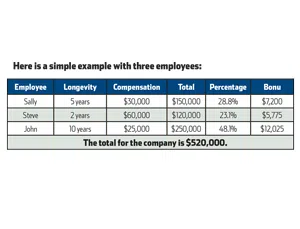With an understanding of when and how to use confidentiality agreements, you can prevent information on your business operations from landing in the hands of your competitors.
Confidentiality agreements, also known as nondisclosure agreements, are increasingly used by all types of businesses to protect proprietary information, and certainly can be used by contractors to help protect their proprietary information. While confidentiality agreements can be entered into with third parties, this article will focus on confidentiality agreements between a contractor and his employees.
Confidentiality agreements can provide you several key protections. They can protect important technical and/or commercial information from disclosure to others. For example, in the employment setting, an employee agrees not to disclose certain technical or commercial information that he has access to or receives during his employment with the employer. If the employee were to violate the agreement, the employer would have a claim for breach of contract and potential injunctive and monetary damages.
The agreement will set forth the specific types of information that cannot be disclosed. The types of information to be protected by a contractor will often depend on particular business needs such as the nature or scope of the contractor's business, market in which it operates, and industry-specific needs.
Some examples of confidential information include: computer programs, business information, customer lists, customer information, sources of supply, documents marked as "confidential" and/or "proprietary," pricing data, financial data, marketing plans, business plans, strategic plans, as well as marketing, production and merchandising systems.
One very important aspect of a confidentiality agreement is that it must establish a time period during which confidentiality is to be maintained. For example, in Wisconsin, an employment confidentiality agreement is generally enforceable for only up to two years from the date of an employee's termination. It is important that the confidentiality agreement indicate that nondisclosure cannot occur at any time during employment and for the specific period of time (e.g. two years) following termination of employment. Thus, confidential and proprietary information is likely subject to protection for a limited time.
Trade Secrets Non-disclosure
A contractor can also protect trade secrets, if any, in its business. Contractors are able to protect indefinitely their trade secrets under the Uniform Trade Secrets Act ("UTSA"), which exists in over 40 states throughout the country.
A trade secret is defined as information, including a formula, pattern, compilation, program, device, method, technique or process to which the following apply:
- The information derives independent economic value, actual or potential, from not being generally known to, and not being readily ascertainable by proper means by other persons who can obtain economic value from its disclosure or use.
- The information is the subject of efforts to maintain its secrecy that are reasonable under the circumstances.
Some courts also use the following six factors for guidance in determining whether specific information is a protectable trade secret:
- The extent to which the information is known outside of the company's business;
- The extent to which it is known by employees and others involved in the company business;
- The extent of measures taken by the company to guard the secrecy of the information;
- The value of the information to the company and to the company's competitors;
- The amount of effort or money expended by the company in developing the information; and
- The ease or difficulty with which the information could be properly acquired or duplicated by others.
Under the UTSA, a company may prevent a former employee from misappropriating the company's trade secrets for an indefinite period of time, provided that the company brings a claim within three years after the misappropriation is discovered or should have been discovered.
Both a confidentiality agreement and a trade secrets nondisclosure agreement must include consideration for the employees' promises. For new employees, the employment opportunity itself can be sufficient consideration. It should be specifically set forth in the agreement. In contrast, if the confidentiality agreement is being executed by a current employee, additional consideration is necessary. For example, contractors may need to offer a small sum of compensation (e.g. $50-100) or an additional employment benefit (e.g. half day of additional paid time off) in addition to the continuing employment. Again, this must be specifically set forth in the agreement.
Finally, a confidentiality agreement or a trade secrets nondisclosure agreement should include numerous boilerplate protections for the contractor. A contractor can and should work with his attorney to ensure that all protections are set forth in the confidentiality agreement. For example, a confidentiality agreement should contain a provision indicating that no implied license to the technology or information is granted to the employee and that all such confidential information must be returned either upon request by the contractor or at the end of the employee's employment with the contractor.


